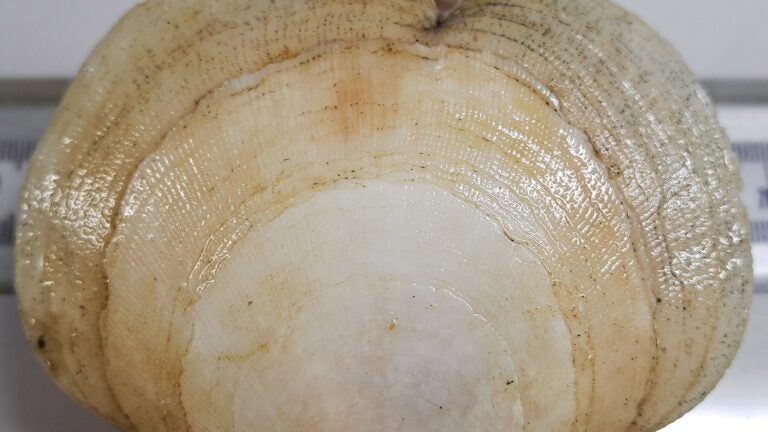
"According to NOAA, the research team collected the one-of-a-kind scallop at the northern edge of Georges Bank, an underwater plateau located about 60 miles east of Cape Cod that extends toward Nova Scotia, Canada. The plateau is shallow compared to the surrounding ocean, making it rich in nutrients and a perfect place for scallops and other marine life to thrive. "This area is known for strong currents and a rocky-cobbly bottom."
"Strong currents can toss scallops around, causing them to hit rocks or other scallops. That can lead to shell damage. As the injury heals, the scallop continues to grow and shell malformations like this begin to appear," NOAA explained. NOAA scientists study Atlantic sea scallops through two surveys that look at their habitat, population, and how they grow. The information helps set safe catch limits for commercial fishing."
NOAA scientists dredged a uniquely heart-shaped scallop from the northern edge of Georges Bank. The scallop’s unusual shape resulted from an earlier shell injury that healed irregularly as the animal grew. Georges Bank is a shallow underwater plateau about 60 miles east of Cape Cod extending toward Nova Scotia, with nutrient-rich waters that support abundant scallop populations. Strong currents and a rocky-cobbly bottom can toss scallops into rocks or other scallops, causing shell damage that later produces malformations. NOAA monitors Atlantic sea scallops through long-running dredge surveys and a HabCam underwater camera survey to inform safe commercial catch limits.
Read at Boston.com
Unable to calculate read time
Collection
[
|
...
]